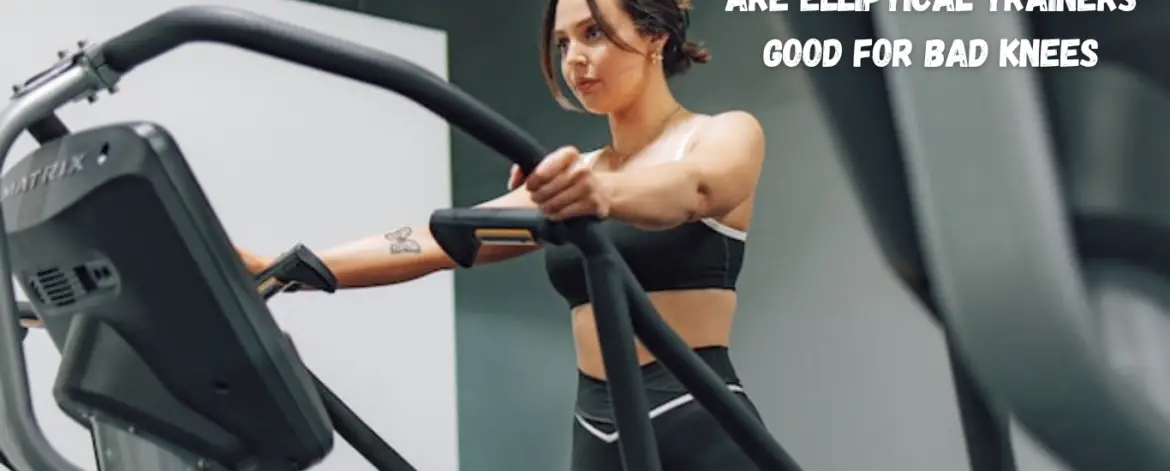When it comes to knee health, the elliptical trainer has long been the go-to gym equipment for those seeking a calorie-burning workout that’s kind on the joints. But are these machines truly a sanctuary for sore knees, or is this a fitness myth waiting to be busted? Let’s glide into the world of ellipticals and find out if they’re the saviors of our synovial joints.

The Mechanics Behind the Motion
First off, let’s get technical. An elliptical trainer is ingeniously designed to mimic the natural gait cycle without the harsh impact of footfalls that come with traditional running or walking. This means your feet never lose contact with the pedal, providing a smooth, continuous movement that spares your knees the pounding of a pavement-pounding session.
Why Elliptical Trainers Could Be Your Knee’s New Best Friend
Low Impact, High Results
For folks with knee trouble, “low-impact” is the magic phrase. And ellipticals are the wizards in the fitness realm that make this magic happen. The gentle rolling motion allows for a vigorous workout minus the stress on your knees. It’s like sending your knees on a vacation while the rest of your body is at a boot camp.
Controlled Range of Motion
Bad knees often stem from overuse, injury, or arthritis. The elliptical’s controlled range of motion keeps the knee from bending too much or twisting in unnatural ways, protecting the delicate cartilage from further damage.
Strength and Stability
While being gentle on the knees, ellipticals are tough on muscles – in a good way! They engage the quadriceps, hamstrings, and glutes, which are crucial for knee support. Strengthening these muscles means less strain on your knee joints, which could translate to a “thank you” note from your knees.
But Wait, There’s a Catch
Not One-Size-Fits-All
Despite the praise, ellipticals may not be for everyone. The fixed position can sometimes force the knees into an unnatural alignment, potentially causing discomfort. It’s essential to adjust the machine to fit your body, not contort your body to fit the machine.
The Importance of Technique
Poor form can turn any exercise from friend to foe. On an elliptical, this could mean leaning too heavily on the handrails or slouching, which can throw off your alignment and put undue pressure on your knees. Proper posture and a neutral spine are paramount.
Muscle Imbalances
Ellipticals can also contribute to muscle imbalances. While they’re great at working certain leg muscles, they might not hit all the right spots needed for a fully rounded knee-support system. It’s crucial to supplement elliptical workouts with exercises that target a broader range of muscles.
How to Make the Most of Your Elliptical Experience
Customization is Key
Adjust the stride length, resistance, and incline to fit your needs. A more extended stride isn’t necessarily better, especially if you’re short or have limited flexibility.
Mix It Up
To avoid overuse injuries, mix elliptical workouts with other forms of low-impact exercises like swimming, cycling, or yoga. This diversification not only keeps your routine fresh but also promotes overall joint health.
Listen to Your Body
Your body’s feedback is the most honest review you’ll get. If your knees are singing praises post-workout, you’re on the right track. If they’re screaming for mercy, it’s time to reassess your routine.
When to Steer Clear of the Elliptical
Severe Knee Conditions
For those with advanced osteoarthritis or significant knee injuries, the elliptical might still be too much. In these cases, non-weight-bearing exercises could be a better fit.
The Wrong Type of Pain
While some muscle soreness is normal, sharp or persistent pain is a red flag. It’s essential to distinguish between the typical “good workout” pain and the “something’s not right” pain.
Final Thoughts: Is the Elliptical the Knight in Shining Armor for Bad Knees?
The answer is a resounding “It depends.” For many, ellipticals are the perfect solution to staying fit without flaring up knee issues. They offer a great workout, cardiovascular benefits, and a safe haven for knees that have seen better days.
However, they’re not a universal fix. It’s about finding what works for your unique anatomy and fitness level. With the right approach, ellipticals can be a key player in managing knee pain and keeping you on the fast track to health without the high-impact hustle.
So, are elliptical trainers good for bad knees? They have the potential to be a knee’s knight in shining armor, provided you wield this weapon wisely in your fitness arsenal





